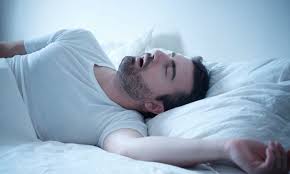Whole Night sleep study test: Procedure and polysomnography
A sleep study test, more formally known as a polysomnogram, is performed to diagnose sleep disorders such as sleep apnea, insomnia, and restless leg syndrome (RLS). It involves spending the night at a sleep laboratory that's part of a hospital or an outpatient sleep clinic. As you sleep, electrodes attached to your head and body monitor your brain waves, breathing, and movement. A technician watches as you sleep via a discreet camera.
Since it can be strange to sleep somewhere other than your bed and to know that you're being monitored and observed, you may feel some anxiety about the experience. The more you understand why the test is important and what to expect, the more comfortable you'll feel.
Purpose of Test
Your doctor may want you to have a sleep study if you have trouble falling asleep, wake up frequently, snore, or have other symptoms of a sleep disorder.1 A polysomnogram might also be advisable based on a screening test for narcolepsy (excessive daytime sleepiness) known as the Epworth Sleepiness Scale.
Sleep studies are designed to diagnose sleep disorders, including:
Sleep apnea (a total obstruction of breathing that lasts for more than 10 seconds)
Periodic limb movements
Excessive daytime sleepiness
Insomnia
Circadian rhythm disorders
Parasomnias (sleep behaviors)
Narcolepsy
Because self-reports don't paint a reliable picture about one's sleep, the test is necessary to get a more complete picture about the quality of your rest and what may be going on in your body to affect it. The electrodes—small metal discs with wires attached—placed on your body monitor your brainwave activity and sleep stages, heart rhythm, muscle tone, leg movements, breathing patterns, and blood's oxygen levels. The data collected from a full night's sleep is then interpreted.
Before the Test
AsleepThe asleep does require some preparation, so it's good to be aware of what's recommended before your test day.
Timing
Most sleep studies take place throughout one night. According to the National Sleep Foundation, a typical check-in time for a polysomnogram is between 8 p.m. and 10 p.m, and the usual departure time after a person wakes up is between 6 a.m. and 8 a.m.2 The goal is for the patient to sleep for at least seven hours. If you work nights, some facilities can accommodate studies done during the day.
Location
This test typically is done at a sleep center or sleep lab. This may be a special department that's incorporated into a hospital or clinic, or it may be a stand-alone facility. Sleep studies are sometimes even set up in hotels. Sleep labs may be accredited centers, which means they have met the standards of the American Academy of Sleep Medicine.
If your doctor is ordering a sleep study for you, they will steer you in the direction of a lab that they are familiar with and trust. If you're seeking help on your own, be sure to research facilities in your area to find one that is accredited or has been favorably reviewed.
In general, a sleep center has multiple bedrooms that are set up for overnight sleep studies. These rooms are designed to be as comfortable and homey as possible, often with regular bedroom furniture (i.e., not clinical-looking hospital beds), a television, a private bathroom, and other amenities.
This was the procedure of conducting a sleep study test.



Comments
Post a Comment